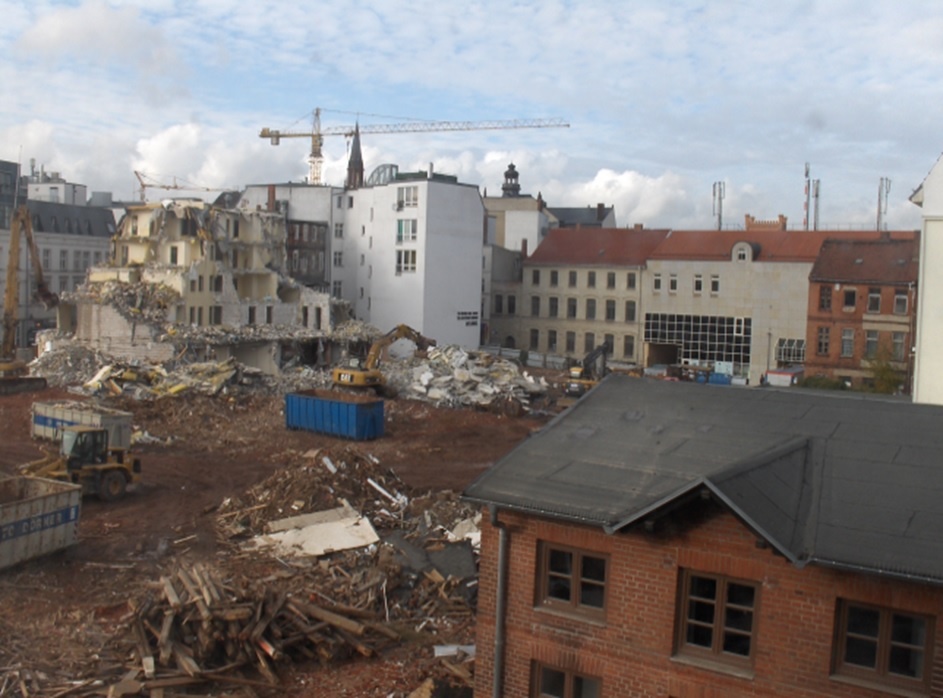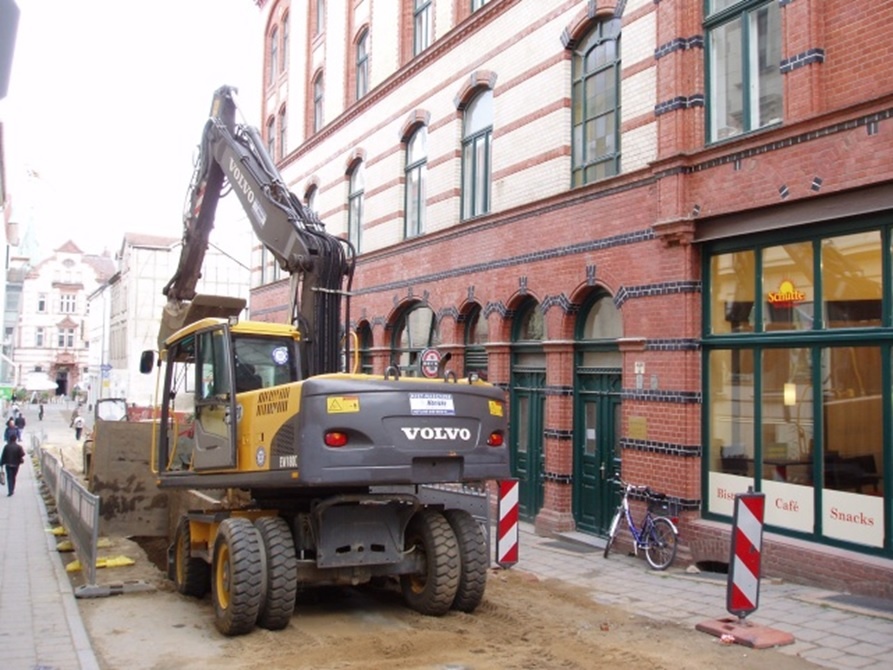Structure-damaging vibration
The vibration tolerance of structures is significantly higher than that of humans, which in turn is significantly higher than that of sensitive equipment. The causes of damage to structures because of vibration usually result from inadmissibly large stresses or strains to which a structural component is subjected. Ideally, the relevant stress variable (stress, strain) could be measured directly on the corresponding component to determine the permissibility of the dynamic load. However, this is only possible in individual cases where the load and the location with the highest stress are known. Typical situations in which structural damage can occur are demolition work and construction site activities.
Normally, however, the component at risk is not known in advance. In addition, it is often not a question of structural damage to the load-bearing structure, but of slight damage to the building, which nevertheless reduces the serviceability of the building.
The question of causality often arises. If the reference values of the relevant standards and guidelines (e.g. DIN 4150-3) are not exceeded, it can be assumed that such vibrations cannot be the cause of the damage. Even if the reference values are exceeded, there need not be any causality of damage.
In many cases, however, damage is complained about even though the relevant reference values are far from being reached. If we disregard the fact that this can also involve damage that was already present but had previously escaped attention, the vibrations could have triggered the damage (the crack) in this case, but not caused it.
A hidden defect in the structure can be made visible by the marginal increase in stress from vibrations: The crack, which would have appeared later anyway, now appears earlier because of vibration. Its shape is usually not typical of vibrations but shows the actual cause. Any other additional event could also have triggered the damage.

